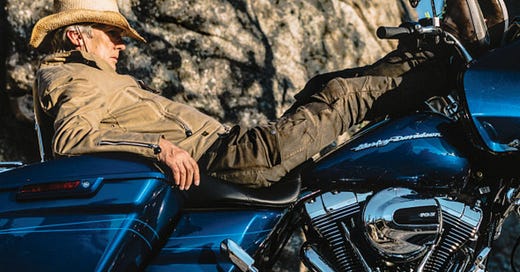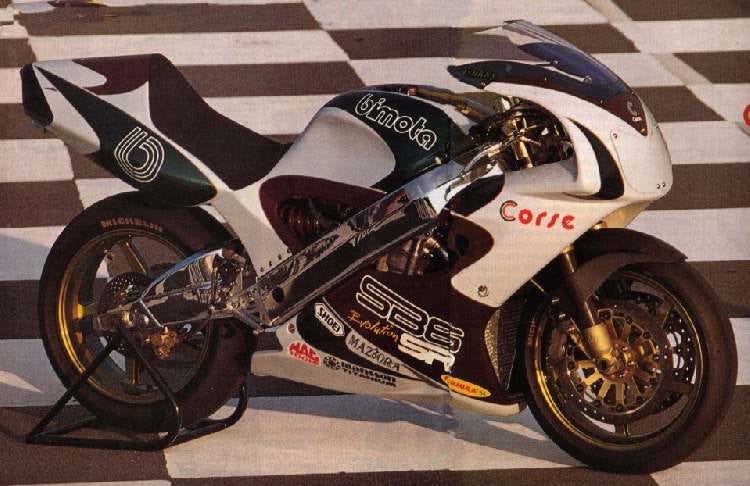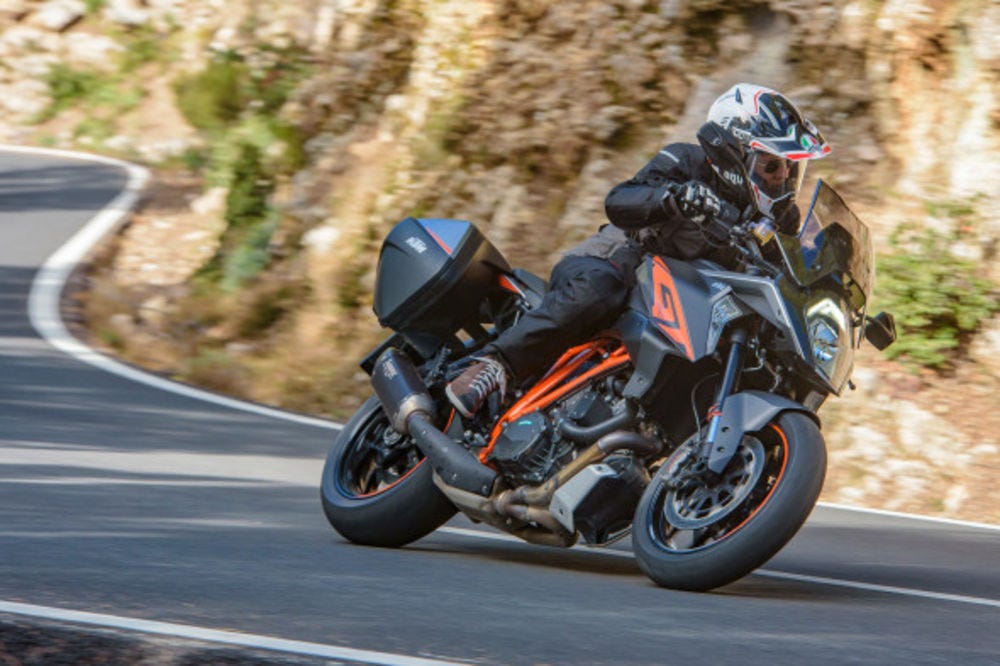This interview originally appeared on my old blog in April 2016.
Syracuse native Peter Jones still receives correspondence from folks who enjoyed his Cycle World feature story about Sturgis last fall, and that surprises him. I contacted Jones recently to talk motorcycles, and thought it would be fun to interview someone who’s typically doing the interviewing.
What was your upbringing like?
My upbringing was unconventional. We lived in the city until I was 11, and there were no motorcycles in my family until my brothers and I each left home.
Who or what influenced you to become a motorcyclist?
I was 21 when I first got a motorcycle. I was attending college in Florida and it seemed an easy, economical means of transportation. I bought a Kawasaki 175 two-stroke. It had many issues.
Did you get your degree, or are you just naturally gifted with words?
My degrees are in Fine Art and Industrial (Product) Design. I went racing in 1989, and it took over my brain. I stopped racing during the 1992 season, but was still addicted to trying to solve the puzzle of winning. I knew I’d learned something I’d never read in a bike mag so I sent a story to Cycle World; it was rejected and I then sent it to Motorcyclist, which bought it. That was that. Sold a few more to Sport Rider and RRW and then I left the museum where I worked to work for Moto Point, the Bimota importer. Left that place in five months after learning the fruitlessness of being there, and the staff had left Sport Rider and I was hired. I needed a job. Been doing moto-journalism mostly since, though at times more marketing.
You recently wrote a Cycle World column about filling Peter Egan’s shoes. Which motorcycle writers besides Peter do you appreciate and why?
John Burns is the best. He can make me jealous with his craft and style. There’s one other but he has only ever freelanced and although he writes very well he’s clueless about motorcycles. Buzz Buzzelli first caused me to notice and care about who wrote a story in a bike mag. All others back then showed little personality. Buzz showing personality is what interested me writing about bikes. Egan took it from there.
How many years were you editor of Motorcycle Street & Strip?
I created Street & Strip with Blake Conner while we worked for the original owner of 2WF.com. That owner had also purchased American Roadracing (which had been gutted and destroyed by its previous owner and was a bad deal by the time the keys were handed over) and Scooter Kizer, owner of AMA Pro Star drag racing had come asking for a drag racing mag. I pointed out that there was no market for a drag mag but I’d an idea rolling around in my head since Sport Rider to create a mag for all those riders across the USA who lived in cities and places with no twisty roads. I figured many of them were doing things on the street related to drag racing, to the aesthetics of drag racing, and the whiteness of motorcycling publications had always embarrassed me. Kizer agreed to the concept, so I created MS&S.
Then the owner of 2wf shut the company down, gave the title to Kizer, and after an issue of mayhem I was not involved, in brought me back to be editor. That lasted about four years. Super Streetbike and another mag copied the concept, but got it a bit wrong, and they both eventually died too. Somewhere in there a black guy on the East Coast started a mag in the same vein, and he was able to take the concept naturally further. He did an awesome job and it’s a disservice I can’t remember the title of his mag.
My favorite MS&S story was of street racing in Philly, with images all from video captures giving it a rough look. The police had shown up and watered the street down, after they left the racers poured gasoline on the water and set it afire to burn it dry, our reporter was ticketed for loitering with intent to participate in street racing, and we ran a scan of his ticket too. We were shoving hard against the industry norms. We had Jason Britton on the cover doing a stoppie on a city street, and R1 Show doing a sideways burnout on a city street on a cover (he was Laurence Fishburne’s stunt rider in Biker Boyz, which could have been an alright movie if it didn’t have that ridiculous ending).
Tell me about the time you rode a Bimota to 202.247 mph. How did that opportunity present itself, and what is it like go that fast? You were familiar with the Bimotas from your days as a race tech, correct?
I’d walked out of Moto Point, went home and faxed in my resignation. So it took Bob Smith balls to ask me to ride that Moto Corse-owned and built SB6. But if Smith had anything it’s balls (he has disappeared from sight and for reportedly good reason).
Anyway, he liked my writing so he asked if I wanted to ride the bike (above) at the Formula USA event at Pocono to see if it could go 200 mph down the front straight. After the police officer showed us he didn’t know how to operate his radar gun in this odd use (it has a switch to choose between speeds above or below 150 mph. He’d never had to touch that switch before.) I suggested to Bob we run the bike where the speed will actually mean something; the ECTA at Maxton a month later was a happy accident. Shin Kondo, owner of Moto Corse in Japan is brilliant. I owe him for building such a bike that was an honor to ride.
Which motorcycles have you owned?
That Kawasaki, a ‘71 Honda CB350, ‘75 Yamaha RD350, ‘74 Honda CB400F, ‘75 Laverda 750SF, ‘75 Laverda 3C, ‘81 Moto Morini 500 Sport, ‘75 Ducati 860 GT, Norton 750, ‘78 Triumph Bonneville, ‘62 Vespa (Allstate) 175, ‘84 Moto Morini 500 Camel, Honda Dream, Honda 450, ‘02 Yamaha Zuma, ‘06 Suzuki GSX-R1000, ‘72 Honda CB200, Ducati 500 GTL, Benelli Hurricane 60, Suzuki SM400, Husqvarna SM610, and ‘04 Aprilia Tuono (sort of; not quite in this order).
If you only had the resources and space for one bike, which would it be and why?
The KTM 1290 Super Duke GT (above) is pretty much at the top of the technology rocket today, and it is an all-around practical bike. But there is no one bike to have, only that one must have a bike. Is there a better machine than the Triumph (Nazi Triumph?) that Steve McQueen rode in The Great Escape? A better bike than any that Cannon Ball Baker (below) rode across America? A better bike than the first one that made a girl’s eyes sparkle at you?
You get first dibs on testing several new motorcycles each year. Which have been your favorites and why?
I’ve been on mostly (but not exclusively) European machines and they do what they need to do within their target market, except for one. It was one of the most expensive I’ve ridden in the last couple of years, so its failure is inexcusable. One brand I’ve ridden in the last few years makes nice bikes but its marketing is over the top. I think they are now seeing a backlash for that.
Where have you lived, and where do you see yourself in the next few years?
Syracuse, around Central New York, Florida, SoCal, NorCal, Connecticut, Iowa, far ends of Pennsylvania, North Carolina, not in that order.
Where I will be in a few years depends on the sale of my house this spring.
What other jobs have you held beyond journalism? Tell me about your contributions to Öhlins and Nitron USA.
I was a welder at Electric boat in Groton, Connecticut, working on the SS Ohio, first of the trident class of nuclear submarines. I’ve been a truck washer, janitor, busboy, punch press operator, carpenter, weed puller, automated mailing machine operator, industrial fabricator, Shriner circus ticket deliverer, foreign auto mechanic, art teacher, museum director, Senior Experimental machinist, lab manager, metals sorter, marketing manager, poet, pauper, pawn…
At Öhlins I did the marketing and worked with other to redevelop the Harley-Davidson shocks and bring the company into that market. At Nitron USA I did nothing because doing anything there was an impossibility.
Tell me about your book, “Death is a Cartoon.”
I need to finish it immediately; it’s been shelved for about four years. It’s about risking life for fun and sport. Long story but, writing it got me connected with the North American Sartre Society, and at a conference of the NASS I delivered a paper about the book. I’ve now done four papers and am working on my fifth, and I’ve just now been published in the Sartre Studies International Journal, which is a juried academic publication. Like racing, this endeavor has become addictive, but now I need to finish that old project.
Where’s the best place to ride and why?
Riding is best. It doesn’t much matter where.








"Riding is best. It doesn’t much matter where." ~ I love that. I try to ride several times a week, because it's so fun. Neighborhood roaming, jumping on highway 280 just for 10-15 minutes and turning home again, getting a ride to the coast, whatever. Even riding my lil Vespa a mile plus to work and home makes me happy. We get to RIDE!!
Peter I cut the two pages out of the 2007 Cycle World 17 years ago of “The Why of Riding” and Mounted it to Poster Board.
It hangs in my Man Cave and is (too me)
Your Greatest Work! Once a rider, ALWAYS A RIDER!
Your recent article in October Road Rider
Reminded me of it! Forever Addicted..
Jeff Steves , San Carlos 71 years young.